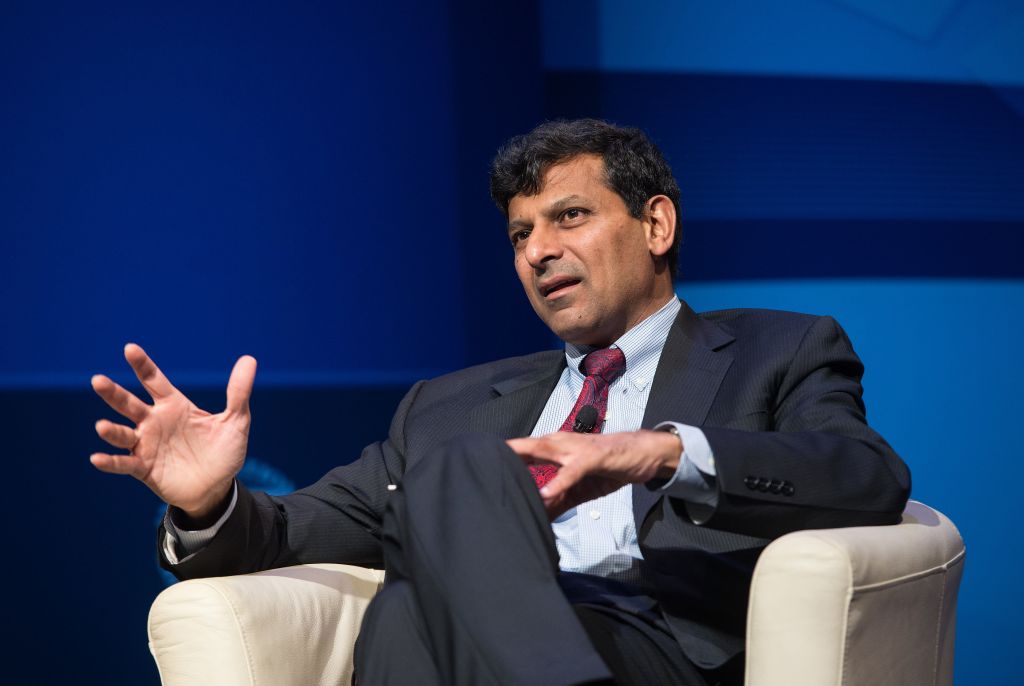- Tuesday, April 29, 2025
The economist observed that the long-term intent of Trump is to increase US production, but, even if feasible, that will take a long time to set up

By: India Weekly
FORMER Reserve Bank governor Raghuram Rajan has described the Trump administration’s reciprocal tariffs on about 60 countries as “self goal” and said its impact on India will be “smaller”.
US president Donald Trump has announced the imposition of additional ad-valorem duties ranging from 10 per cent to 50 per cent on imports from all trading partners.
“Let us recognise that in the short run, this will adversely affect the US economy first and foremost – it is a self-goal as footballers would say. Coming to the effects on other countries, the direct effect of any tariff on India’s exports will be to raise prices for US consumers, reducing their demand, and hence Indian growth,” he told PTI on Thursday (3).
The baseline duty of 10 per cent will be effective from April 5 and the 26 per cent from April 9.
Certain sectors are exempted from these duties include pharma, semiconductors and energy products.
“Of course, to the extent that the US has applied tariffs on other countries also, and India is competing with producers from those countries, the overall effect will be smaller than if the tariffs had been applied only on India – since US consumers will not be able to substitute away to non-tariffed producers,” the eminent economist noted.
Rajan, currently a Katherine Dusak Miller Distinguished Service Professor of Finance at Chicago Booth, said the long-term intent of Trump is to increase US production, but, even if feasible, that will take a long time to set up.
Responding to a question, he said the US reciprocal tariffs on India will probably be disinflationary, as India exports less and retains more goods domestically, and other countries like China try and export to India now that the US market is more closed.
Asked if India can turn this crisis into an opportunity, Rajan said, “We can certainly bring down the tariffs we have been raising – that would be beneficial to India regardless of whether it will help us negotiate down US tariffs.”
He said that more generally, India needs to understand that the world has become much more protectionist, so “we have to be more clever about trade”.
For example, Rajan said, looking east toward the ASEAN and Japan, looking southwest to Africa, and looking northwest to Europe all make sense.
While noting that working out a more equitable relationship with China should be a priority, he said, “equally, let us build stronger bridges within SAARC, our neighbours”.
“That means overcoming political differences. As the world breaks up into regional blocks, South Asia should not be the odd region out,” he said.
President Trump, in a historic measure to counter higher duties on American products imposed globally, announced reciprocal tariffs on about 60 countries.
“This is Liberation Day, a long-awaited moment. April 2, 2025 will forever be remembered as the day American industry was reborn, the day America’s destiny was reclaimed, and the day that we began to make America wealthy again. We are going to make it wealthy, good, and wealthy,” Trump said in his remarks from the Rose Garden at the White House on Wednesday.
He said the US charges other countries only a 2.4 per cent tariff on motorcycles, but Thailand and others are charging much higher rates, like 60 per cent, India 70 per cent, Vietnam 75 per cent, and others charge even higher rates.
As he announced the tariffs, he held up a chart that showed the tariffs that countries such as India, China, the UK, and the European Union charge, along with the reciprocal tariffs that these countries will now have to pay. (PTI)